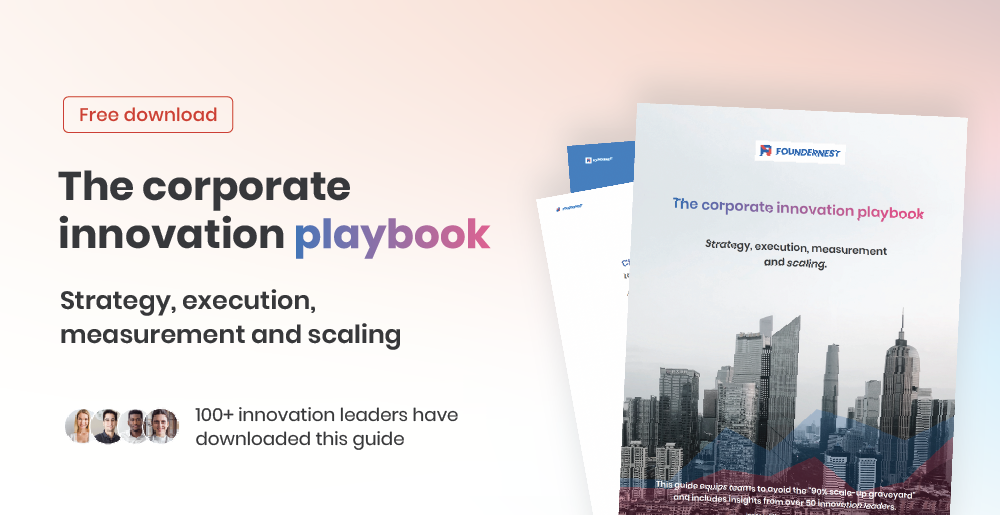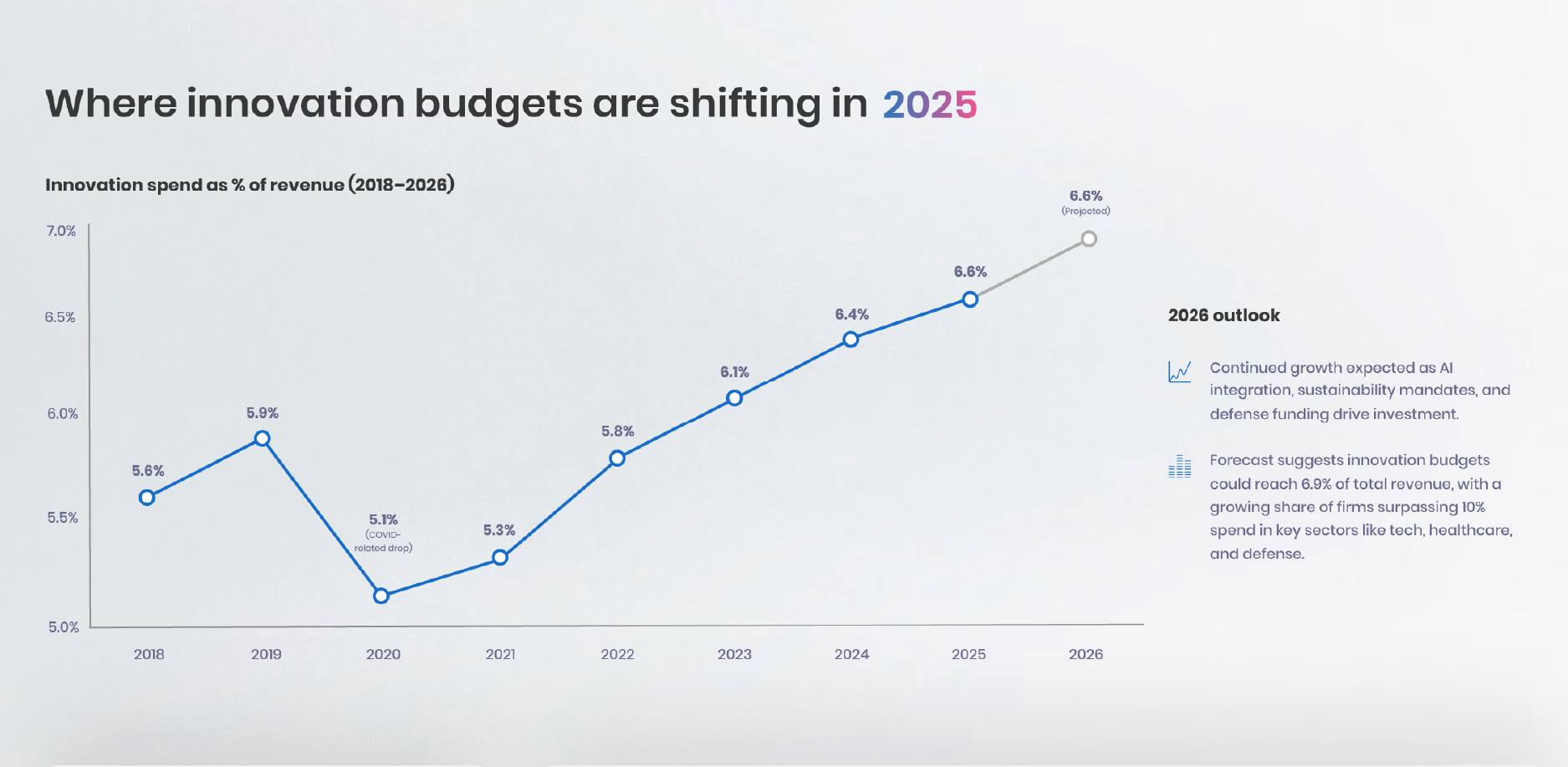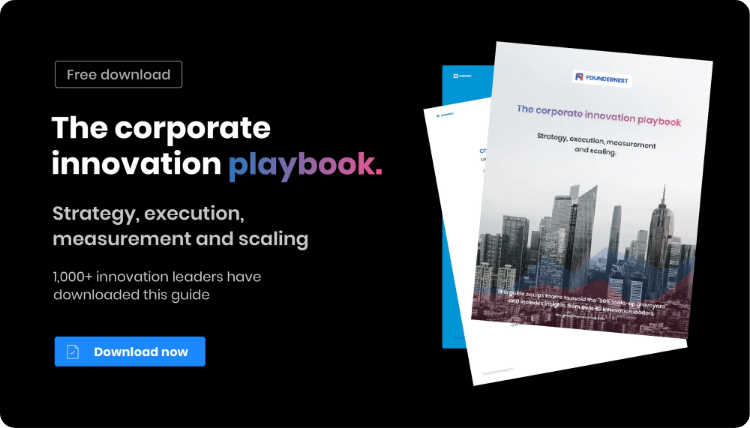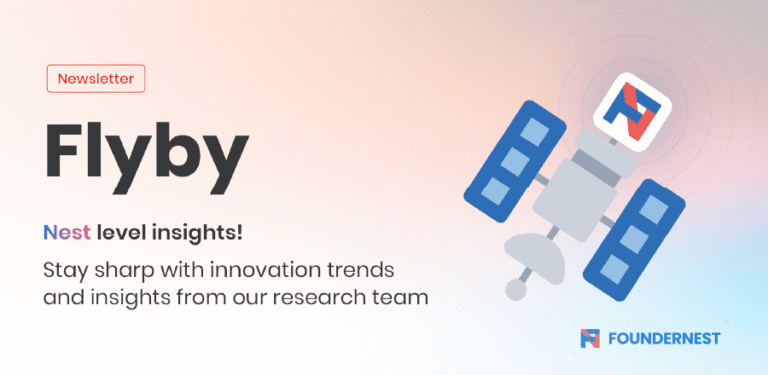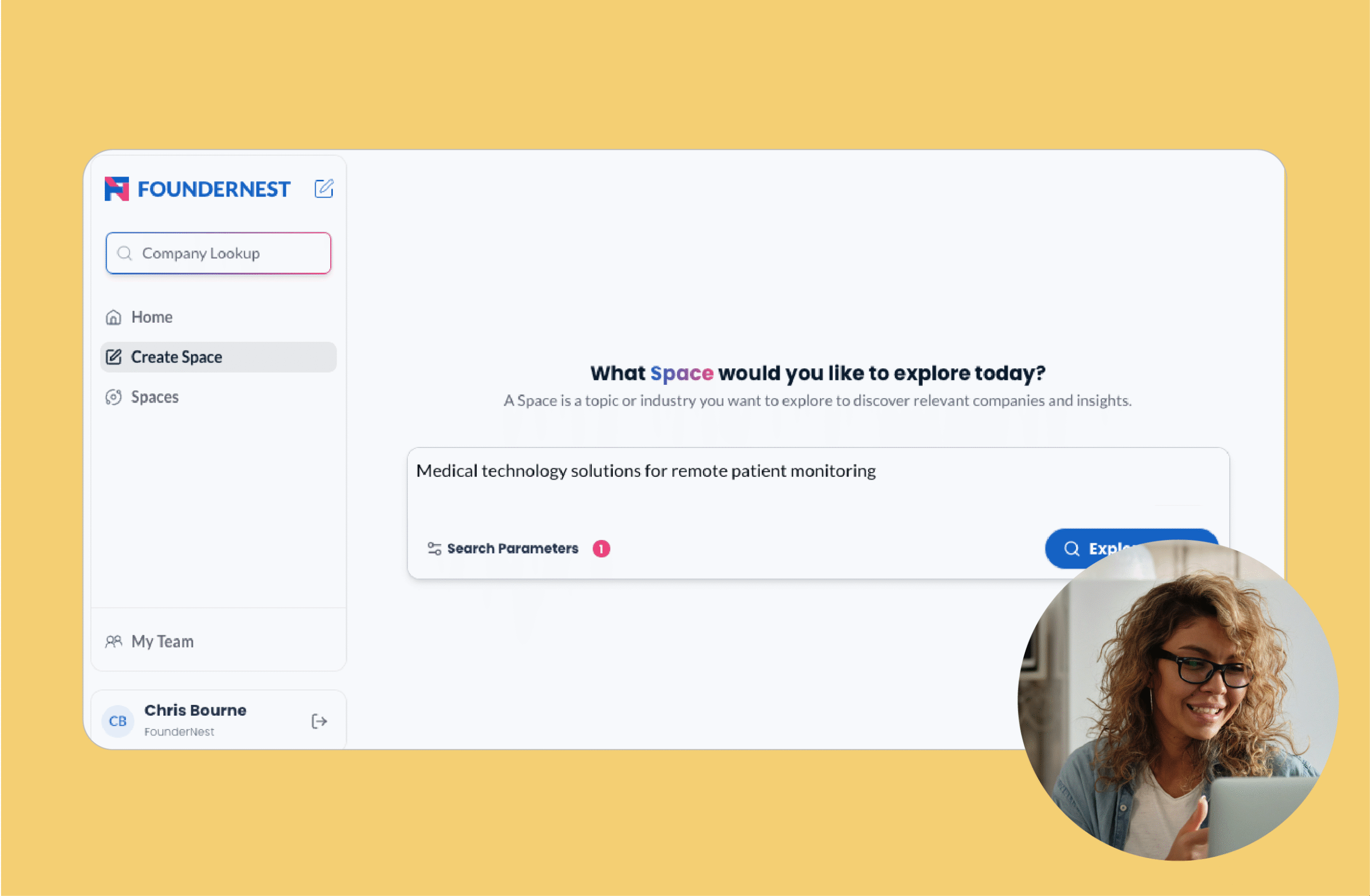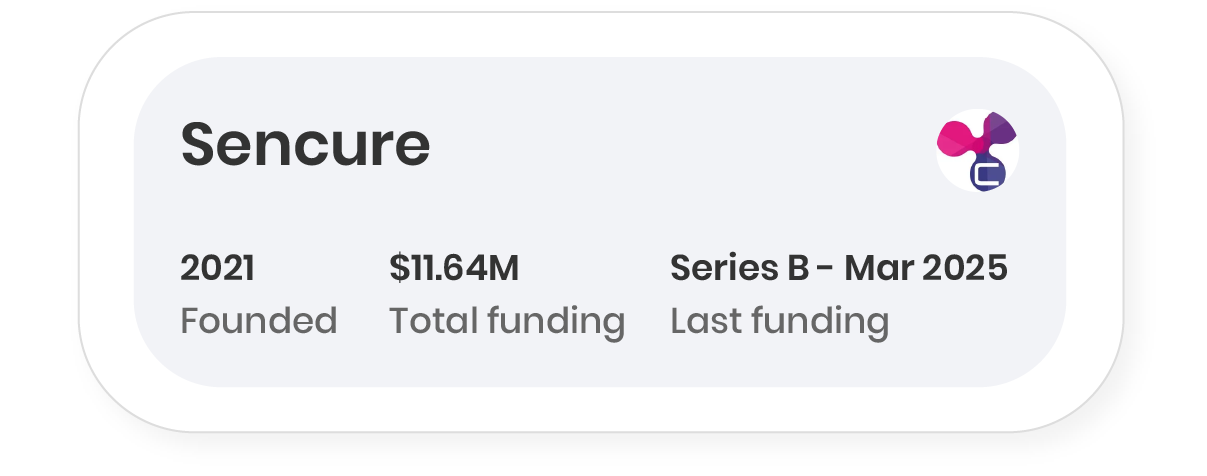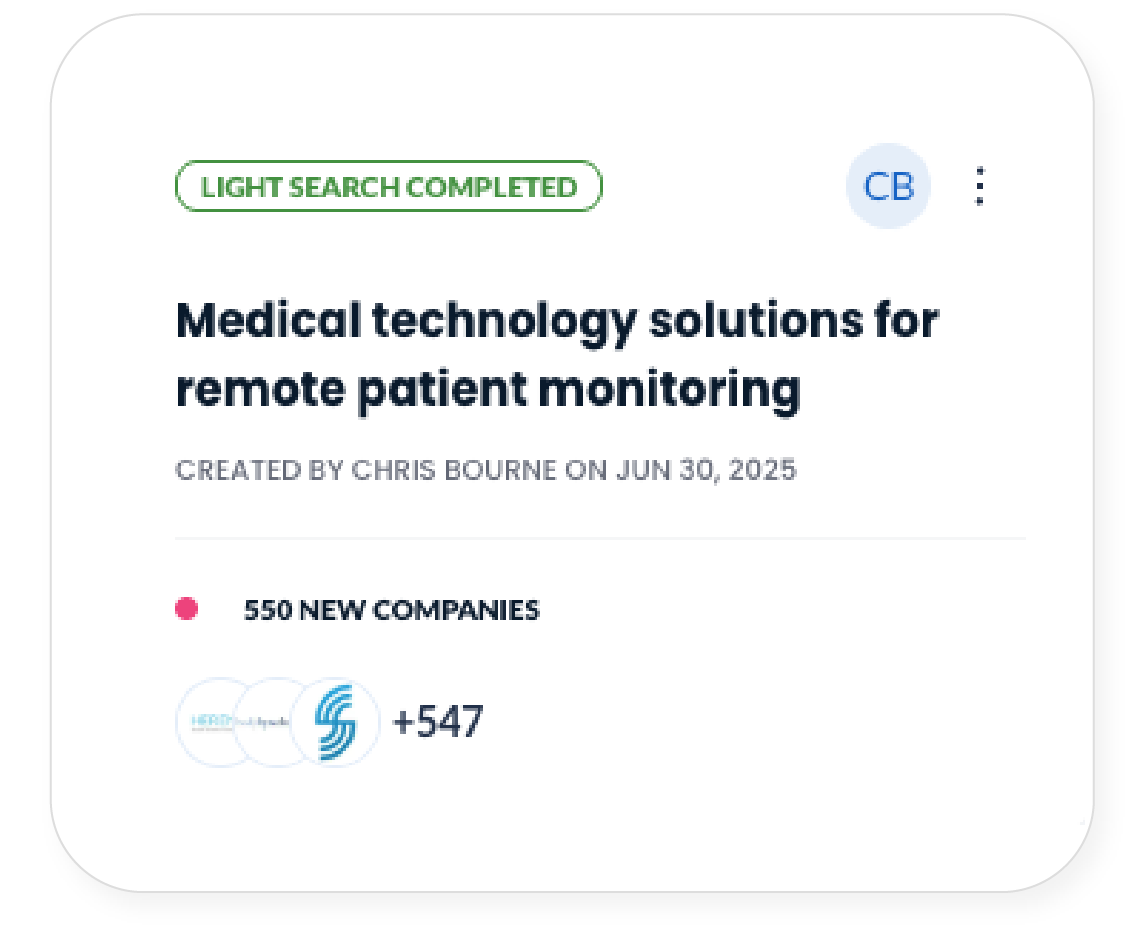In recent years, surging levels of economic uncertainty ravaged innovation budgets. The early stages of the pandemic forced companies into survival mode, triggering widespread freezes on R&D spending and innovation projects alike.
As companies sought stability, the ambition that is often synonymous with innovation teams was replaced with short-term thinking. Innovation projects lost out to cost-saving initiatives, and anything without a near-immediate ROI swiftly disappeared from the pipeline. Innovation didn’t stop, but it became easier to put back by a quarter or two.
Fast-forward a few years and budgets were hampered once again by rising interest rates, inflation, energy costs, and supply chain chaos that made CFOs more selective about where every dollar was going than ever before.
Research by the Ayming Institute revealed that while driving innovation is still high on the agenda for executive teams in 2025, it has slipped in priority compared to last year – overtaken by reducing costs which has become the most common focus for this year.
And yet, the same paper reveals that there is reassuring resilience in innovation budgets. Across the board, innovation budgets have increased from last year from 6.4% to 6.6% of total revenue, with more than a third of businesses spending 8% or more.
Clearly, the appetite for digital transformation and innovation has not gone away. Rather, it has evolved in line with economic influences and shifting business priorities as organisations seek innovation opportunities that can be integrated quickly, scaled easily, and start producing measurable results.
Now, in 2025 the challenge for innovation teams is, more so than ever, maintaining the delicate balance between forward-thinking innovation strategies and mounting cost and return on investment (ROI) pressures.
With pressure to deliver faster results and do more with less, the question is simple: what are companies choosing to back this year, and more to the point, where are your competitors spending their budgets?
This article takes a closer look at where innovation budgets are heading in 2025 and explores how the priorities of innovation teams are shifting.
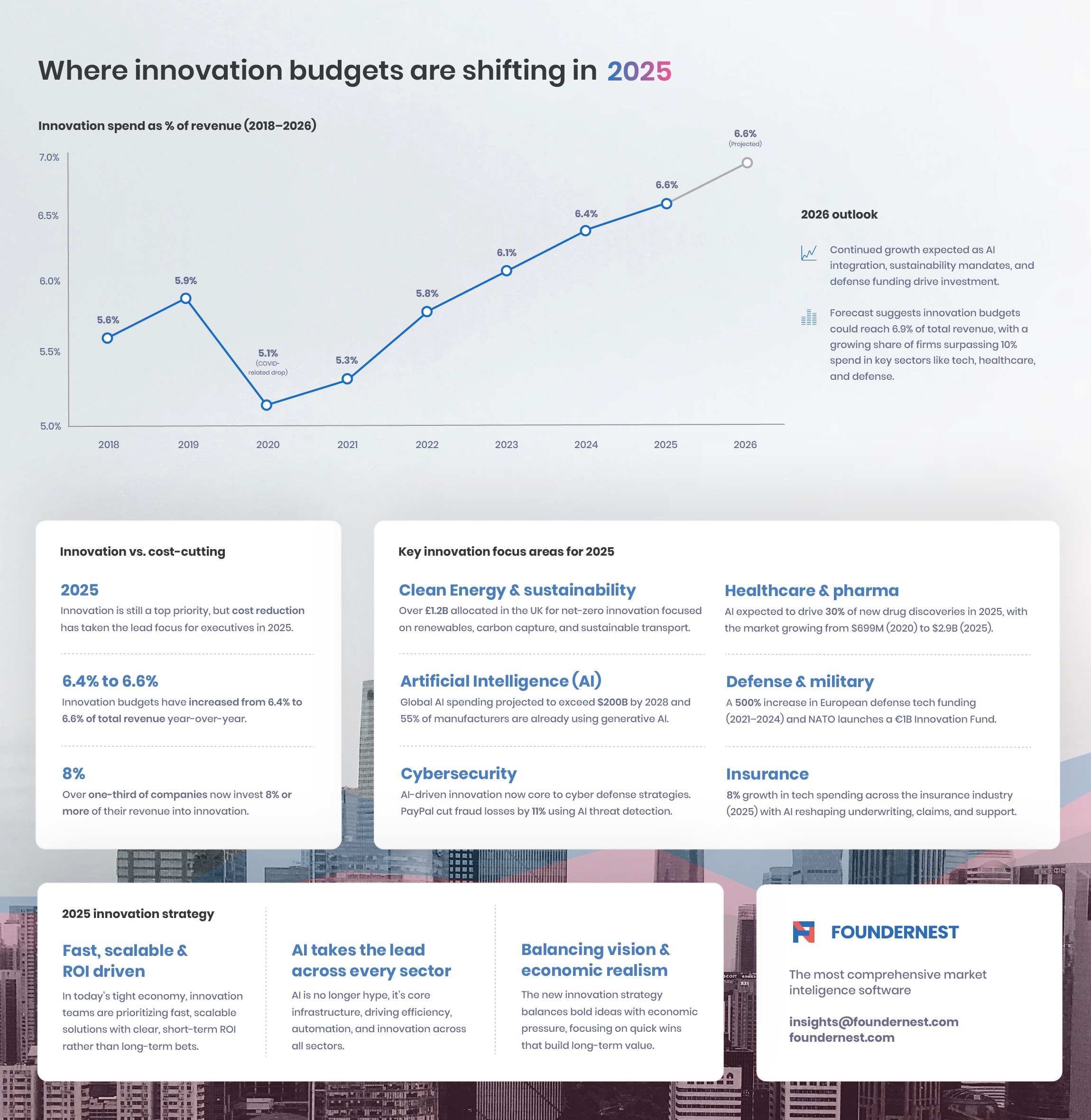
Clean energy and sustainability climb the innovation agenda
Innovation budgets in 2025 are increasingly tied to national and global priorities. There is a strong emphasis on clean energy technologies, including renewables (wind, solar, and hydrogen) and energy storage solutions, as governments and organizations alike prioritise net zero and climate change initiatives.
Sustainability is a major driver of innovation funding. Companies and governments are prioritizing investments in renewable energy, sustainable materials, and climate-related technologies. In the UK, for example, more than £1.2 billion is dedicated to net-zero innovation, including clean energy, carbon capture, and sustainable transport.
AI investment soars as businesses move beyond hype to real-world innovation
As Artificial Intelligence (AI) technologies continue to dominate boardrooms, investment in these innovations is soaring in 2025. Experts at IDC project that global AI spending will surpass $200 billion by 2028. Organizations are now moving beyond the initial hype, focusing on practical AI applications to enhance productivity, automate processes, and maintain competitiveness.
Innovation at the forefront of cybersecurity
As cyber threats become increasingly sophisticated, innovation has emerged as a key enabler in safeguarding business operations. In response to escalating threats and cybersecurity incidents plaguing even the world’s largest businesses in recent years, organizations of all sizes are placing an increasing emphasis on innovation projects that can safeguard business operations from the impact of devastating cyberattacks and online threats.
Technologies can help organizations spot and respond to threats instantly, providing automation and accuracy that manual systems can’t match. AI-powered tools can detect unusual patterns and highlight potential issues before they become serious, allowing businesses to address risks more quickly and effectively.
Case study: In a 2023 interview with VentureBeat, PayPal’s CISO shared how the company was exploring generative AI-driven defense mechanisms to detect cyber security threats and prevent fraud on its platform. PayPal’s AI-driven cybersecurity strategy shows how targeted AI innovation can pay off, cutting fraud-related losses by 11% and slashing loss rates even as transaction volumes nearly doubled. By turning 200 petabytes of payment data into fast-learning models, the company improved risk response times and customer protection without adding friction.
AI and generative AI to dominate innovation budgets in manufacturing
Industrial manufacturers are increasingly turning to AI and generative AI to boost productivity and reduce costs. Already, they are using it to predict when machines need maintenance, catch quality issues faster, and make production lines more efficient without constant human input. On the factory floor, generative AI tools are supporting workers with instant access to technical guidance and training, helping close knowledge gaps and improve safety.
Deloitte reports that 55% of industrial product manufacturers are already using generative AI tools in their operations, with more than 40% planning to boost their investment in AI and machine learning within the next three years.
Innovation for precise, personalised healthcare
Digital transformation projects that are focused on making the healthcare and pharmaceutical system work better, from how drugs are developed to how care is delivered, is reshaping how patients engage with care providers. The World Economic Forum estimates that AI will drive 30% of new drug discoveries in 2025, cutting costs significantly and accelerating personalized treatments.
The use of AI in the pharmaceutical sector is on a steep rise, with the market expected to grow from $699.3 million in 2020 to almost $2.9 billion by 2025. Already, the technology is helping companies cut down the time and cost of R&D while speeding up the discovery of new drugs.
According to LITSLINK, using AI in the pharmaceutical industry can dramatically reduce the typical “high failure rates, lengthy timelines, and hefty costs” associated with drug discovery. Traditional drug development can take over ten years and costs can run into the billions of dollars, largely due to the time it takes to sift through huge volumes of data.
With AI and machine learning, that process speeds up significantly by making it easier to analyse complex datasets, identify promising drug targets, and select the right ingredients earlier in the pipeline.
Case study: In 2021, the parent company of Google, Alphabet, launched Isomorphic Labs to apply AI, specifically DeepMind’s AlphaFold, to drug discovery. The company uses AI to predict how drugs interact with the human body, aiming to speed up the drug development process. Fast forward to 2025, and major pharmaceutical players, including Eli Lilly and Novartis, are already tapping into Isomorphic Labs’ expertise, which is being fuelled by AI technologies. In March, Alphabet raised a staggering $600 million to further refine and scale its AI-powered drug discovery platform.
Where military and defense budgets are heading
Between 2021 and 2024, funding for European defense tech startups surged by 500%. To boot, NATO has launched a €1 billion Innovation Fund, and the US has pledged over $150 billion for defense research and development.
As defense budgets continue to rise, military and defense innovation teams are rapidly embracing advanced technologies to stay ahead of evolving threats. A growing share of innovation budgets in the defense sector is now heading towards military robotics: autonomous systems that can offer agility, scalability, and strategic advantage on and off the battlefield.
According to leading UK innovator, Roke, modular, autonomous systems such as “swarm drones, autonomous logistics vehicles, and AI-driven surveillance platforms” are already transforming modern military operations and will continue to evolve through 2025
How innovation teams are reshaping insurance
In 2025, insurance firms are putting serious budget behind innovation that helps them stay relevant in a world of fast-moving, unpredictable risks. Traditional insurance models are falling short in covering complex, emerging threats like cyberattacks, extreme climate events, or the uncertain liability around AI. As a result, product development has jumped to the top of the list for many innovation teams.
Like many other industries, insurers are doubling down on AI. Forrester predicts an 8% increase in tech spending across the insurance industry in 2025. Generative and agentic AI tools are starting to reshape everything from how policies are priced to how claims are handled.
Tasks such as underwriting, usually a highly manual and time-intensive process, are being streamlined with AI models that can assess risk faster and with more precision. Traditionally reliant on call centers and long wait times, insurers are now using AI-powered chatbots, virtual assistants, and automation to deliver faster, more personalized support. These tools can handle common queries such as policy details, billing questions, or claims statuses, freeing up human team members to focus on more complex issues.
After years of uncertainty and tight budgets, companies are still investing in innovation, but with more focus than ever before on impact, speed, and ROI. AI is leading the charge across nearly every industry. Whether it’s automating processes in manufacturing, speeding up drug discovery in healthcare, or transforming customer service in insurance, AI is becoming central to how businesses work and compete.
For innovation teams, practical, scalable solutions that can be integrated quickly and start delivering value immediately are critical to success.
